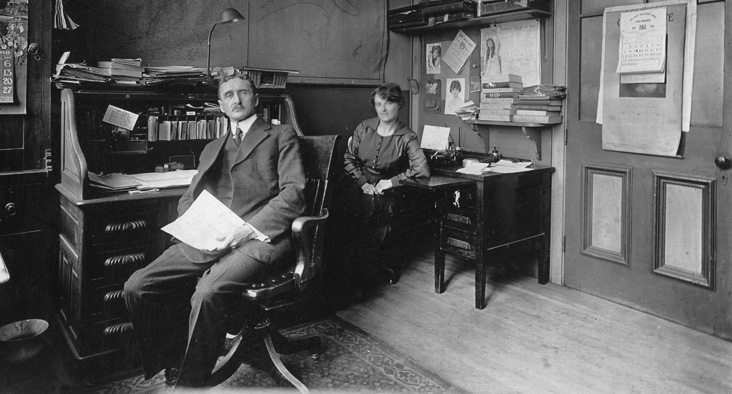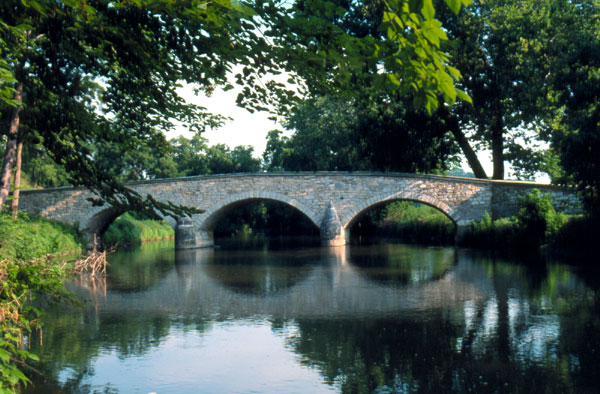|
Nathaniel Rochester
Nathaniel Rochester (February 21, 1752 – May 17, 1831) was an American Revolutionary War soldier and land speculator, most noted for founding the settlement which would become Rochester, New York. Early life Nathaniel Rochester was the fifth of six children born to John and Hester Thrift Rochester in Westmoreland County, Virginia on February 21, 1752. His father, who owned Rochester House, died in 1756. Five years later, Hester married Thomas Cricher. Cricher moved the family to Granville County, North Carolina in 1763, where Nathaniel attended the school of the Reverend Henry Pattillo. His grandfather William Rochester emigrated from England to the Americas. At age 16, Rochester found a job with a local Hillsborough merchant, signing a two-year contract to be paid £5 per year, which after six months was revised to pay him £20 per year. Rochester would eventually become a partner in the business within five years. In his early working years, he also served as a clerk ... [...More Info...] [...Related Items...] OR: [Wikipedia] [Google] [Baidu] |
Maryland General Assembly
The Maryland General Assembly is the state legislature of the U.S. state of Maryland that convenes within the State House in Annapolis. It is a bicameral body: the upper chamber, the Maryland Senate, has 47 representatives, and the lower chamber, the Maryland House of Delegates, has 141 representatives. Members of both houses serve four-year terms. Each house elects its own officers, judges the qualifications and election of its own members, establishes rules for the conduct of its business, and may punish or expel its own members. The General Assembly convenes its legislative session for 90 days each year to act on more than 2,300 bills including the state's annual budget, which it must pass before adjourning ''sine die''. The General Assembly's 446th session convened on January 10, 2024. History The forerunner of the Maryland General Assembly was the colonial institution, an Assembly of Free Marylanders (and also Council of Maryland). Maryland's foundational charter cr ... [...More Info...] [...Related Items...] OR: [Wikipedia] [Google] [Baidu] |
Paymaster
A paymaster is someone appointed by a group of buyers, sellers, investors or lenders to receive, hold, and dispense funds, commissions, fees, salaries (remuneration) or other trade, loan, or sales proceeds within the private sector or public sector. Specific titles within the British government are Paymaster of the Forces, Paymaster General and Paymaster of Pensions. Purpose The primary purpose of a paymaster is to receive fees in escrow by buyers in a large transaction, and disburse to the sellers and brokers on the transaction. A paymaster is usually, but not required to be, a lawyer (also known as a 'lawyer paymaster'). When dealing with commission payments on contracts dealing with large amounts of money (such as oil, gas, steel, iron, gold, MTNs, VGs, t-strips, and other instruments), most banks in the United States are very wary of handling such large amounts of money. In addition, most buyers and sellers of such transactions want to place the money with a neutral third pa ... [...More Info...] [...Related Items...] OR: [Wikipedia] [Google] [Baidu] |
Saint John's Church (Hagerstown, Maryland)
St. John's Church, or St. John's Episcopal Church, founded in 1786, is an historic Episcopal church located at 101 South Prospect Street in the South Prospect Street Historic District of Hagerstown, Maryland. It is the seat of Saint John's Parish, Diocese of Maryland, which covers most of Washington County, Maryland. History Though it is the mother church of Saint John's Parish in the lower Cumberland valley, Saint John's Church Hagerstown is also one of the many daughter churches of Broad Creek Church of Piscataway Parish. The current physical church is the fourth since establishment of the “Chapel in the Woods” (1747) as a chapel of ease for All Saints Church (1742) in Frederick, Maryland. Services began in 1744, and four decades later the congregation erected a brick church on Mulberry Street in Hagerstown, the site of which is still maintained as the church cemetery. The General Assembly of Maryland separated the congregation from All Saints’ Frederick in 1786 ... [...More Info...] [...Related Items...] OR: [Wikipedia] [Google] [Baidu] |
Washington County, Maryland
Washington County is a County (United States), county located in the U.S. state of Maryland. The population was 154,705 as of the 2020 United States census, 2020 census. Its county seat and largest city is Hagerstown, Maryland, Hagerstown. The county is part of the Western Maryland region of the state. Washington County was the first county in the United States to be named for the American Revolutionary War, Revolutionary War general (and later President of the United States of America, President) George Washington. Washington County is one of three Maryland counties recognized by the Appalachian Regional Commission as being part of Appalachia. The county borders southern Pennsylvania to the north, Northern Virginia to the south, and the Eastern Panhandle of West Virginia, Martinsburg Panhandle of West Virginia to the south and west. Washington County is included in the Hagerstown-Martinsburg, West Virginia, Martinsburg, MD-West Virginia, WV Hagerstown metropolitan area, Metropo ... [...More Info...] [...Related Items...] OR: [Wikipedia] [Google] [Baidu] |
Postmaster
A postmaster is the head of an individual post office, responsible for all postal activities in a specific post office. When a postmaster is responsible for an entire mail distribution organization (usually sponsored by a national government), the title of Postmaster General is commonly used. Responsibilities of a postmaster typically include management of a centralized mail distribution facility, establishment of letter carrier routes, supervision of letter carriers and clerks, and enforcement of the organization's rules and procedures. The postmaster is the representative of the Postmaster General in that post office. In Canada, many early places are named after the first postmaster. History In the days of horse-drawn carriages, a postmaster was an individual from whom horses and/or riders (known as postilions or "post-boys") could be hired. The postmaster would reside in a "post house". The first Postmaster General of the United States was the notable founding father ... [...More Info...] [...Related Items...] OR: [Wikipedia] [Google] [Baidu] |
Hagerstown, Maryland
Hagerstown is a city in Washington County, Maryland, United States, and its county seat. The population was 43,527 at the 2020 United States census, 2020 census. Hagerstown ranks as Maryland's List of municipalities in Maryland, sixth-most populous incorporated city and is the most populous city in the Western Maryland, Maryland Panhandle. Hagerstown anchors the Hagerstown metropolitan area extending into West Virginia. It makes up the northwesternmost portion of the Washington–Baltimore combined statistical area in the heart of the Great Appalachian Valley. The population of the metropolitan area in 2020 was 293,844. Greater Hagerstown was the fastest-growing metropolitan area in the state of Maryland and among the fastest growing in the United States, as of 2009. [...More Info...] [...Related Items...] OR: [Wikipedia] [Google] [Baidu] |
Factory
A factory, manufacturing plant or production plant is an industrial facility, often a complex consisting of several buildings filled with machinery, where workers manufacture items or operate machines which process each item into another. They are a critical part of modern economic production, with the majority of the world's goods being created or processed within factories. Factories arose with the introduction of machinery during the Industrial Revolution, when the capital and space requirements became too great for cottage industry or workshops. Early factories that contained small amounts of machinery, such as one or two spinning mules, and fewer than a dozen workers have been called "glorified workshops". Most modern factories have large warehouses or warehouse-like facilities that contain heavy equipment used for assembly line production. Large factories tend to be located with access to multiple modes of transportation, some having rail, highway and water load ... [...More Info...] [...Related Items...] OR: [Wikipedia] [Google] [Baidu] |
Weapon
A weapon, arm, or armament is any implement or device that is used to deter, threaten, inflict physical damage, harm, or kill. Weapons are used to increase the efficacy and efficiency of activities such as hunting, crime (e.g., murder), law enforcement, self-defense, warfare, or suicide. In a broader context, weapons may be construed to include anything used to gain a tactical, strategic, material, or mental advantage over an adversary or enemy target. While ordinary objects such as rocks and bottles can be used as weapons, many objects are expressly designed for the purpose; these range from simple implements such as clubs and swords to complicated modern firearms, tanks, missiles and biological weapons. Something that has been repurposed, converted, or enhanced to become a weapon of war is termed ''weaponized'', such as a weaponized virus or weaponized laser. History The use of weapons has been a major driver of cultural evolution and human history up to ... [...More Info...] [...Related Items...] OR: [Wikipedia] [Google] [Baidu] |
Colonel (United States)
A colonel () in the United States Army, United States Marine Corps, Marine Corps, United States Air Force, Air Force and United States Space Force, Space Force, is the most senior field officer, field-grade United States Military, military Officer (armed forces), officer military rank, rank, immediately above the rank of Lieutenant colonel (United States), lieutenant colonel and just below the rank of Brigadier general (United States), brigadier general. Colonel is equivalent to the naval rank of Captain (United States O-6), captain in the other Uniformed services of the United States, uniformed services. By law, an officer previously required at least 22 years of cumulative service and a minimum of three years as a lieutenant colonel before being promoted to colonel. With the signing of the National Defense Authorization Act of 2019 (NDAA 2019), military services now have the authorization to directly commission new officers up to the rank of colonel. The U.S. uniformed service ... [...More Info...] [...Related Items...] OR: [Wikipedia] [Google] [Baidu] |
North Carolina Line
The North Carolina Line refers to North Carolina units within the Continental Army. The term "North Carolina Line" referred to the quota of infantry regiments assigned to North Carolina at various times by the Continental Congress. These, together with similar contingents from the other twelve states, formed the Continental Line. The concept was particularly important in relation to the promotion of commissioned officers. Officers of the Continental Army below the rank of brigadier general were ordinarily ineligible for promotion except in the line of their own state. History *On June 26, 1775, less than ten weeks after the Battles of Lexington and Concord, the Continental Congress voted to support 1,000 Continental troops in North Carolina. This force was organized in September of that year as two regiments of 500 men each. Not all Continental infantry regiments raised in a state were part of a state quota, however. On December 27, 1776, the Continental Congress gave Washington ... [...More Info...] [...Related Items...] OR: [Wikipedia] [Google] [Baidu] |
Fourth North Carolina Provincial Congress
The Fourth North Carolina Provincial Congress was a Meeting (parliamentary procedure), meeting of the Provincial Congress, provincial congress of the ''de facto'' Province of North Carolina, provincial government of North Carolina, composed of 153 Delegate (American politics), delegates from 35 County (United States), counties and nine towns. The congress convened in Halifax, North Carolina, Halifax on April 4, 1776, and ended on May 14, 1776, during the final year of Josiah Martin's Governor, gubernatorial administration. Samuel Johnston was Unanimity, unanimously chosen as President (government title), president, and Cornelius Harnett was appointed as Vice president, vice president of the congress. History Resolutions The delegates authorized their representatives to the Second Continental Congress to vote for United States Declaration of Independence, independence, including Joseph Hewes, William Hooper, and John Penn. The 83 delegates present on April 12, 1776 adopted the H ... [...More Info...] [...Related Items...] OR: [Wikipedia] [Google] [Baidu] |





